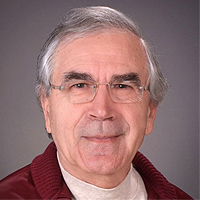Suicide in teenagers during the COVID-19 pandemic in Cuba: actions for its prevention
Published on: 7th May, 2021
OCLC Number/Unique Identifier: 9124702324
Introduction: Suicidal behavior in teenagers constitutes a health problem that, given the necessary measures of social isolation taken by the global emergency of the COVID-19 pandemic, must generate timely actions for its prevention and control from the public health services.
Objective: To propose an action plan for the prevention of suicide in teenagers of the Remedios municipality, subjected to voluntary home confinement during the COVID-19 pandemic.
Methods: an observational, descriptive, cross-sectional study was carried out in the “XXX Anniversary” Teaching Community Polyclinic of the municipality Remedios. We worked with the population of 25 teenagers between 12 and 19 years old who made suicide attempts in the period 2019-2021. The empirical methods used were: bibliographic and documentary review, participant observation, focus group, semi-structured interview and questionnaire.
Results: The suicide attempt was common in female teenagers aged 17 to 19 years not identified as risk, the lack of motivation due to the study activity and the previous suicide attempts by ingesting psychotropic drugs without serious intention of dying predominated. The most frequent psychological disorders were emotional disorders, stress, depression, irritability, apathy and insomnia. Actions are presented for the prevention of suicide and promote behaviors that contribute to mental health in the context of COVID-19.
Conclusion: The prevention of suicidal behavior in teenagers in conditions of social isolation due to COVID-19, must include actions that facilitate the coping with stress, intra-family communication and resilience.
Modulation of atrial natriuretic peptide receptors in ovarian folliculogenesis
Published on: 24th January, 2022
Specific receptors for atrial natriuretic peptide (ANP) located in intra-ovarian tissues are suggested to be involved in ovarian functions such as oocyte maturation and follicle development. However, the characteristics and modulation of its receptor in relation to ovarian folliculogenesis are not well defined. This study examined the properties of ANP receptors in the ovary using quantitative receptor autoradiography. In the pig ovary, the highest binding sites for 125I-ANP(1-28) were localized in the granulosa cell layer of the follicles as well as cumulus oophorous. The binding sites for 125I-ANP(1-28) on theca layer of the ovarian follicles were mainly localized in the external layer, but none was observed in the internal layer. Specific binding of 125I-ANP(1-28) was not found clearly in atretic follicles. In the corpus luteum, the binding site was not observed. Analysis of the competitive inhibition of the binding of 125I-ANP(1-28) to the granulosa and theca externa layers in various preovulatory follicles by increasing concentrations of unlabeled ANP(1-28)was consistent with a single high affinity for 125I-ANP(1-28). The maximal binding capacities of 125I-ANP(1-28) in granulosa layer were significantly increased in proportion to the development of ovarian follicles. However, no significant difference of binding capacities of 125I-ANP(1-28) was observed in theca externa layer. The binding affinities of 125I-ANP(1-28) in granulosa and theca externa layers were not different from each other. Especially, the correlation between specific binding of 125I-ANP(1-28) and follicle diameter. A significant correlation was revealed between specific binding of 125I-ANP(1-28) and follicle diameter (R = 0.88, p < 0.0001) in granulosa layer, however, less relationship was detected in theca externa layer (R = 0.50, p < 0.0001). Therefore, these results indicate that the biological ANP receptors exist in granulosa and the theca externa layers of the pig ovary, and suggest that the ANP receptors in granulosa layer may be related to the regulatory function of the ovarian follicullogenesis including oocyte maturation.
Personal and academic factors of stress in nursing students during clinical practices in the context of COVID-19
Published on: 23rd March, 2022
In the year 2020, COVID-19 spread globally. The increase in cases and deaths has created problems such as stress, anxiety, and depression in health workers.The health care workers (inclusive of students in professional practices are vulnerable to psychiatric pathology due to their exposure to the virus, their increased risk of contagion and even death, overload of functions, pressure for decision-making, the close experience of patients, relatives, and colleagues’ pain, and the requirement to function at the top of capacity.The objective of this research is to analyse the personal and academic factors of stress development in nursing students, during clinical practices in the COVID-19 context.It is a cases and controls study, with 154 students who attended clinical practices during the period of May-August 2020. High levels of stress were found in 61% of students, 34 of these had difficulties concentrating (OR: 3.08), 64 participants reported fear of contact with COVID-19 patients, (OR: 1.9) and 68 participants were identified with inadequate knowledge of COVID-19 transmission (OR: 1.5).The study found that the transition to virtual classes as a strategy to reduce contagion increases three times the possibilities of developing stress, another variable that doubles the risk of stress is the fear of caring for a patient with COVID-19 who has not been diagnosed.
Timely initiation of breastfeeding and associated factors among mothers with vaginal and cesarean deliveries in public hospitals of Addis Ababa, Ethiopia
Published on: 21st April, 2022
OCLC Number/Unique Identifier: 9485822018
Background: WHO and UNICEF recommend breastfeeding to be initiated within an hour of birth. However, timely initiation of breastfeeding remains low in Ethiopia. Therefore, this study aimed to compare the timely initiation of breastfeeding and associated factors with cesarean and vaginal deliveries in public hospitals in Addis Ababa, 2021. Methods and materials: Comparative cross-sectional study was conducted from January 2021 to February 2021 in public hospitals of Addis Ababa. 322 mothers within three days of delivery at the postnatal ward of the respective public hospitals were selected. A multi-stage sampling method was employed with the final participants being recruited by systematic random sampling. Data was entered to Epi data Version 4.6 and analysis was performed by SPSS Version 26. A Binary and multivariate logistic regression statistical model was used. Adjusted odds ratio with 95% CI was computed to see the strength of association. Result: Timely breastfeeding initiation was 79 (51.2%) and 123 (80%) for cesarean and vaginal deliveries. With a vaginal delivery, pre-lacteal feeding (AOR = 5.50, 95% CI: 1.83 - 16.57) was significantly associated with timely initiation of breastfeeding. Multiparity (AOR = 2.14, 95% CI: 1.02 - 4.50), support from health care workers (AOR = 2.602, 95% CI: 1.16 - 5.82), and pre-lacteal feeding (AOR = 2.55, 95% CI: 1.13 - 5.75) were significantly associated with timely initiation of breastfeeding with cesarean delivery. Conclusion: The rate of timely initiation of breastfeeding differs according to the mode of delivery. Cesarean delivery, as compared to vaginal delivery, was associated with a lower rate of timely initiation of breastfeeding.
Sudden Cardiac Death in a Neonate Due to Bilateral Absence of Coronary Artery Ostium
Published on: 24th July, 2023
Introduction: Congenital heart disease is a leading cause of neonatal mortality linked to birth defects. Despite the widespread availability of prenatal screenings, detection rates remain low. Accurate early detection of these lesions is pivotal to reducing neonatal morbidity and mortality.Methods: In this case, we present a neonate who experienced sudden cardiac death due to a rare, undiagnosed congenital cardiac anomaly - the bilateral absence of coronary artery ostium. Discussion: This case highlights the importance of prenatal detection of congenital cardiac anomalies. While fetal echocardiography is frequently utilized, it only identifies CHD in 36-50% of cases. This is attributed to inadequate imaging procedures, varied operator skills, and regional discrepancies. Early detection of severe CHD is essential for specialized treatment, thereby mitigating neonatal health risks and improving survival rates.Conclusion: Prenatal detection of CHD, especially coronary anomalies, continues to pose significant challenges. There is a pressing need to establish and enforce standardized protocols for fetal echocardiography aimed at these anomalies. To enhance care and improve outcomes, a joint effort between academic institutions and community centers is encouraged.Learning Objectives: • Congenital coronary artery anomalies are a significant cause of sudden cardiac death in children.• The absence of a coronary artery ostium is known to be associated with other congenital heart diseases, particularly pulmonary atresia with an intact ventricular septum. However, isolated coronary disease has also been reported in this case.• Prenatal echocardiography is a valuable tool for diagnosing congenital heart disease. However, certain limitations may be encountered when diagnosing coronary artery anomalies.
A case of hemiplegia with a cerebrovascular accident in which motor imagery of finger extension on the affected side with finger extension on the unaffected side was effective - A study using F-waves
Published on: 1st July, 2022
We investigated the effect of exercise therapy by simultaneously using motor imagery of thumb or all finger extension on the affected side and thumb or all finger extension exercise on the unaffected side by using the F-wave, which is used to measure the excitability of anterior horn cells to devise an appropriate exercise therapy using motor imagery for patients with increased muscle tone of the thumb muscles on the affected side. Tasks 1, 2, 3, and 4 involved motor imagery of thumb extension on the affected side, motor imagery of finger extension on the affected side, motor imagery of thumb extension on the affected side based on thumb extension on the unaffected side, and finger extension on the affected side based on finger extension on the unaffected side, respectively; conducted in three trials, with one week or more between each trial. Each task was performed for one minute, with a five-minute interval between tasks. The F-waves from the thenar muscles were recorded with median nerve stimulation on the affected side before and during the tasks. The relative values of the F-wave data of the task and the F-wave data before (resting state) and during the tasks were calculated. In results, the relative data of the F/M amplitude ratio in task 4 was lower than that in the other tasks in three trials. In conclusion, motor imagery of finger extension on the affected side with finger extension movement on the unaffected side was effective for improving the muscle tone of the thenar muscles on the affected side.
Factors influencing referral delay of cancer patients to an oncology unit in the Southern Region of Saudi Arabia
Published on: 20th August, 2021
OCLC Number/Unique Identifier: 9194011239
Introduction: Cancer treatment and prognosis depend heavily on early detection. Survival in the early stages is excellent for almost all types of cancer. Unfortunately, in Saudi Arabia, a large number of cancer patients present with advanced disease, resulting in a poor prognosis. There are three levels of delay in the management of cancer patients. The first level is the time between the first cancer-related symptoms and the presentation to the health facility, the second level is from the presentation to the diagnosis, and the third level is between the diagnosis and the treatment. This study aims to determine if there is a delay, at what level and to study the factors causing such delays.Materials and methods: Two hundred cancer patients who presented to the Armed Forces Hospital Southern Region, Oncology Department, were interviewed from January 1st to June 30th, 2018. The interviews were conducted by trained physicians familiar with the questionnaire’s contents. The questionnaire consisted of four sections: a demographic section and three more sections to identify factors causing the delay at the three levels from the patients’ perspectives. All data were analyzed using the SPSS version 20.0.Results: The mean patient age was 63 years. A total of 112 patients were female and 88 were male. The most common cancer type was breast cancer (27.5%). Among the patients, 61% were illiterate and 25.5% had elementary school degrees, 86% expressed little or no general medical knowledge about cancer. More women than men paid attention to cancer symptoms (70% vs. 54%). 75% of the patients presented to the first health facility after 2 months from the first appearance of symptoms (level 1 delay). Only 2% of the patients presented within one week. 50% of the patients received a diagnosis after visiting two health facilities. All patients were diagnosed at hospitals. 40% of patients used alternative medicines, 70% of whom thought this was the cause of their delayed presentations. 67% had their diagnosis confirmed within one month (level 2 delay), and 66% started their definitive treatment within one month (level 3 delay). 75% of the patients blame themselves for the delay. Educational level (p = 0.03), knowledge about cancer (p < 0.01), and the use of complementary and alternative medicines (CAM) (p = 0.01) were significantly associated with delayed presentation of patients to the health facility. Conclusion: There is a delay in the presentation of cancer patients (level 1) in the southern part of Saudi Arabia. Educational level, knowledge of cancer symptoms, and use of complementary and alternative medicines are the main causes. There were no delays in diagnosis and start of treatment (level 2,3).
Soliton phenomena in the process of the functioning of the heart
Published on: 14th March, 2023
The biochemical model explains the intricate mechanisms of psychobiological life. He still cannot explain what the transition from inanimate to living matter is all about. Where is the threshold and what is its essence, what role do biochemical processes play in the coherence of the soma with consciousness and its impact on the soma and vice versa? A similar problem is with other mental processes, their nature does not fit into the biochemical model of life and is inexplicable on the basis of biochemical interactions, again it is much easier to describe it in the light of quantum processes - including wave physics. It is similar to the functioning of the heart or other organs, where only the biochemical processes of the cell are considered, ignoring the bioelectronic processes. Man is not only a purely biological construct but also contains the basis of biochemical, bioelectronic, information, and cybernetic processes that are responsible for shaping the psychobiological processes of man. Contemporary biosystems in science are considered at the level of corpuscular structures, ignoring energy and information structures. By shifting the cognitive emphasis towards energy and information structures, the organism can be perceived as a quantum generator of information: electromagnetic, soliton, acoustic, spin and bioplasma. This bioelectronic construction creates homo electronics with his electronic personality.
Diffuse large B-cell Lymphoma mimicking as cholangiocarcinoma in a young male presenting with obstructive jaundice
Published on: 12th October, 2021
OCLC Number/Unique Identifier: 9305369697
The involvement of bile duct in lymphoma is considered to be very rare and is usually a sequela of a disseminated disease [1]. In contrast to secondary involvement, primary non-Hodgkin’s lymphoma arising from the bile duct is extremely rare and presents with obstructive jaundice [2,3]. Non-Hodgkin’s lymphoma (NHL) accounts for 1% - 2% of all cases of malignant biliary obstruction [4]. Hepatobiliary involvement by malignant lymphoma is usually a secondary manifestation of systemic lymphoma. The first case of Non-Hodgkin lymphoma arising from bile duct was described by Nguyen in 1982 [5]. Most common extra nodal involvement of NHL is abdomen. Although, involvement of the stomach, pancreas or common bile duct is not common [6]. We present to you a case of 31year old male who presented to us with obstructive jaundice and was later diagnosed as Diffuse Large B-Cell lymphoma.
A case report of hepatic actinomycosis: A rare form of presentation
Published on: 20th September, 2022
Hepatic Actinomycosis (HA) is a very rare abdominal actinomycosis that can be confused with hepatic involvement due to a tumor. Liver involvement can occur from an abdominal focus or by blood dissemination from another focus. This disease is much more common in men between 50 - 70 years and in a situation of immunosuppression. Symptoms are nonspecific and diagnosis includes histopathology, cultures, and imaging test. Treatment includes prolonged antibiotic therapy with antibiotics such as penicillin and drainage of abscesses.We present a case of a 54-year-old man patient with a record of three years of chronic pancreatitis of probably alcoholic origin, who developed hepatic actinomycosis, requiring drainage of liver abscesses and directed antibiotic treatment.




